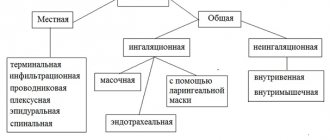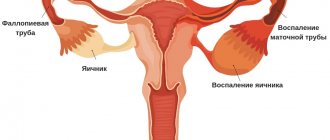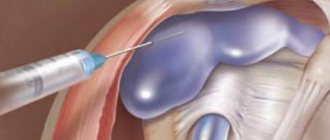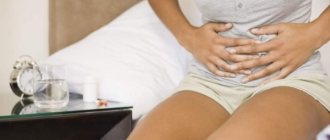After the operation, you will be observed by a doctor and he will answer all your questions about the treatment and care of the suture, and you will learn how to treat the suture after a cesarean section. But still, there are rules that the mother herself should know if she is to have a cesarean section. First of all, it should be noted that inspection and treatment of the seam by a specialist should occur every day. For approximately 6-7 days (the period while you are in the maternity hospital), the nurse on duty will treat your stitch every day with an antiseptic (for example, brilliant green) and change the bandage.
Before discharge, the sutures are removed. Even if you were given absorbable sutures, which are now very often used in gynecology, they are still removed, since they disappear completely on their own approximately 2 months after the operation.
What to do if the suture festers after a caesarean section
Many mothers after surgery are concerned that they observe the release of fluid or pus at the site where the stitches are placed. This is a normal and common occurrence for the first few days. But when the stitches are removed, there should be no discharge. So, if you notice that the suture is oozing after a cesarean section, and you have already been discharged from the hospital, contact your doctor immediately. He will examine you and give you recommendations on how you should behave further and how to care for the seam.
It is worth noting that the fastest healing of the suture is facilitated by wearing a special postoperative bandage. Your doctor will also tell you how to choose the right bandage.
Moms are concerned about the fact that in the first months after surgery, doctors prohibit lifting weights of more than 2 kg. It is certainly difficult for a mother not to hold her baby in her arms. Therefore, doctors advise, depending on the progress of the operation, to hold out for at least the first week. And then do not lift anything heavier than a child, and also very carefully, and under the supervision of the attending physician. Take care of your health, because the baby needs a healthy mother.
In this article:
One of the common complications of artificial delivery is the development of inflammation, when the suture after a cesarean section festeres, and a cloudy yellow-white liquid is released from the wound. In addition to this, the young mother is often bothered by other symptoms: high fever, chills appear, her health worsens, and attempts to move and pick up the baby cause severe pain.
When a woman realizes that the suture after a cesarean section has begun to fester, many questions arise in her head: what to do in such a situation, where to go for help, how is treatment carried out if such a complication occurs? You will find the answers in our article.
Home remedies
In the postoperative period, when the patient’s condition is completely stabilized and there are no complications, further care and treatment are carried out at home.
If the area sutured after surgery becomes wet, it is better to carry out the treatment twice a day, noting the condition of the scar.
If there is suppuration under the suture, then under the supervision of a surgeon, blockade of the wound with a 0.25-0.5% novocaine solution with antibiotics is indicated, and in addition, drugs that resolve the pus are prescribed.
If an allergy appears to any of the components of the ointment, treatment is carried out with cleansers for sensitive skin.
Folk remedies that promote healing and smoothing of scars can be used after the approval of a doctor.
A simple ointment to help scars heal faster: 5 g. calendula cream, 1 drop each of orange and rosemary oil.
The ointment gently dissolves the scar, and the oils in the composition are responsible for the gradual lightening of the scar area. After six months, the place where the old scar formed will almost match the color of the skin.
Types of seams
The decision about what will be done can be made in advance, but sometimes emergency situations occur when urgent surgical intervention is required. This affects how the incision will be made, because when there is a threat to the life of the mother or child, the issue of preserving the beauty of the female body is not in the first place.
Types of seams:
- Vertical suture
- an incision in the abdominal wall is made from the navel to the pubic area along the midline of the abdomen. It is rarely performed, because after it heals, a large, unattractive scar remains. There are certain indications for performing vertical tissue dissection, which, if assistance is not provided in a timely manner, can lead to death. Among the reasons for performing such an incision are acute hypoxia of the child, as well as massive blood loss. - Horizontal suture
- dissection of the skin and soft tissues is carried out along the natural fold separating the abdomen and the pubic area. This type of access to the uterus is called Pfannenstiel laparotomy, in which the abdominal cavity is not opened. After the child is removed, cosmetic stitches are applied, after healing of which a thin, inconspicuous mark remains. - Internal sutures
- the course of the subsequent pregnancy depends on how well the uterus is sutured. With a vertical approach, a transverse incision of the uterus is made; when a Pfannenstiel operation is performed, a longitudinal incision is made.
After a cesarean section, careful treatment of the wound is required so that it does not begin to fester. Following the doctor's recommendations will ensure complete healing of the incision.
How long does it take for wounds to heal?
During the first 48 hours, the patient will be bothered by severe postoperative pain, to get rid of which the woman is given injection anesthesia. If the woman in labor is overweight, then she will be able to cope with painful sensations with the help of a postpartum bandage, which will help immobilize the wound during physical activity. You will have to endure the pain, but you need to get out of bed on the second day. Early physical activity will help prevent intestinal paresis, which is typical for the postoperative period. The sooner mommy starts walking, the faster her recovery will occur. This is important, because you need to take care of the baby and establish breastfeeding. In the meantime, the mother cannot do this, nurses are looking after the baby.
A special postpartum bandage should be worn with caution
The wound from the suture remains not only on the abdominal wall, because both muscle tissue and the wall of the uterus are cut. Therefore, pain after surgery persists for a long time. As healing progresses, the pain symptoms subside, disappearing, and after one and a half to two weeks the pain will practically disappear. Although you will still feel an itching sensation and some pain in the scar area, especially when sneezing or coughing. Some patients experience numbness or sensory disturbances in the area below the abdomen during a transverse incision. But over time, such complications disappear.
The wound is sutured using various techniques, for example, with separate interrupted stitches or a cosmetic intradermal suture. If the incision is vertical, then the sutures, as a rule, are removed after a week and a half, and with a transverse incision, the sutures can be removed after just a week. But do not delude yourself, because final healing has not yet occurred; this will take a lot of time.
Proper care
While the woman is in the postpartum ward, nurses perform daily treatment of postoperative wounds. Before discharge home, the obstetrician-gynecologist will tell you about proper care, how to behave when the suture festers after a cesarean section, as well as what to do if complications arise.
During the week after birth, the wound is lubricated with antiseptic solutions, usually brilliant green, and the bandages are changed. Simple actions help prevent situations where the suture festers after a caesarean section.
After 7-10 days, the sutures should be removed, but if they are made of absorbable materials, such manipulation will not be necessary.
If, after being discharged home, you find white discharge from the wound, this may indicate that the suture after a cesarean section is festering, so the first thing you need to do is consult a gynecologist.
Healing and removal of sutures, on what day?
It is almost impossible to make an accurate forecast and clearly formulate the healing time of postoperative sutures. How many days after sutures can be removed depends on many factors.
In different parts of the body, soft tissue regeneration occurs at different rates.
- During a caesarean section, the sutures can be removed on the 10th day.
- For amputation - on the 12th day.
- For operations on the abdomen and abdominal organs - on the 7-8th day.
- For operations on the chest organs - after 14-16 days.
- For facial surgeries – after 7 days.
If the incision site itches, this indicates normal healing by primary tension of the wound.
Normally, after the edges of the wound have fused, the threads are easy to remove, but if you ignore the timing of removal, inflammation and redness of the scar will begin.
Often, when trying to remove stitches yourself, part of the thread remains in the wound. Upon examination, it is easy to see the place where the thread sticks out, going into the soft tissue.
The consequences of such self-medication are a fistula at the suture through which infection occurs. Pathogenic organisms freely enter the body cavity, a significant thickening of the scar is noticeable, and an unpleasant odor appears from the wound.
Why does the seam fester?
The most common reasons for the suture to fester after a cesarean section
:
- wound infection;
- rejection reaction developing to suture material;
- failure to care for the incision site;
- injury.
The decision on what to do if the suture festers after a cesarean section is made by the doctor after an external examination, gynecological examination, and the results of ultrasound diagnostics. Treatment methods depend on the complexity of the inflammatory process, as well as the reasons why the suture may fester after a cesarean section. In some situations, suture removal and surgical debridement are required.
Herbal medicine in the fight against complications of postoperative sutures
N. I. Pirogov studied the benefits of medicinal plants and compiled collections in a military hospital. Modern medicine has long scientifically confirmed the medicinal effects of traditional recipes. Herbal medicine is best used as an auxiliary treatment, which is carried out in interaction with the main methods. The essence of herbal medicine is to select the optimal combination of medicinal plants, the action of which is aimed at eliminating one symptom. This principle is used to formulate, for example, breast infusions, kidney teas, anti-inflammatory infusions, and so on. Treatment with herbs and herbs is still not a panacea, especially for such inflammatory processes. By itself, this technique is ineffective, but in combination with traditional medicine it can be a good help and speed up recovery. For example, herbal ointment can be used if an old seam suddenly becomes inflamed, which also happens quite often. Plants used as additional medicines for healing sutures have a number of beneficial properties:
- anti-inflammatory;
- pain reliever;
- antimicrobial;
- accelerating regeneration;
- increasing liver function.
The method of herbal medicine in this case consists of taking herbal preparations internally (infusions, extracts) and for topical use (ointments).
The goals of this treatment are to:
- improving the state of the internal environment of the body and the functioning of the excretory system, reducing intoxication;
- normalization of digestion and prevention of negative effects of medications;
- normalization of immunity;
- processing of postoperative sutures.
Such therapy may well be prescribed by the attending physician. If the scar has festered, then the features of the professional selection of such remedies are that the compositions are selected individually, the diagnosis and personal characteristics of the patient are taken into account, the specialist determines the duration of the course, herbal healing is well suited to other methods of treatment and rehabilitation and determines an integrated approach to the patient’s recovery.
Signs of inflammation
When a suture has festered after a caesarean section, self-medicating or making assumptions that the disease will go away on its own is strictly prohibited, because such an attitude towards one’s own health can lead to negative consequences: the development of sepsis, inflammation of the uterus and other pathological conditions.
If after a cesarean section the suture festers, then the woman may have symptoms such as:
- burning pain in the area of the postoperative wound;
- redness of the skin around the stitch;
- the incision site begins to get wet;
- dirty white discharge appears from the wound;
- hyperthermia develops;
- general well-being is disturbed.
If you find signs that the suture after a cesarean section is festering, immediately seek medical help, and do not seek advice from relatives or on forums on the Internet on what to do in this case.
Healing agents
Sometimes young mothers come to doctors and ask: “What should I do if my suture is festering after a caesarean section?” To prevent such a complication, it is necessary to follow the doctor’s recommendations during the recovery period.
After the wound has healed, you can use various drugs that help accelerate the production of collagen and epithelization of the wound surface:
- Contratubeks.
- Betadine.
- Actovegin.
- Solcoseryl.
- Dilaton gel.
- Dimexide.
- Derimax Ultra.
But their use should be stopped if signs of suppuration appear.
If inflammation has begun, treatment depends on the clinical symptoms; in severe cases, it is necessary to drain the wound, remove exudate from it, if the suture festers after a caesarean section. It is also impossible to do without treatment with antibiotics, because purulent inflammation is caused by bacteria.
Be sure to tell your doctor if you are breastfeeding so that the doctor can prescribe you medications that are approved for breastfeeding.
Treatment of inflammation of postoperative sutures
While the patient is in the hospital, a nurse will care for the stitches for the first five days. Care consists of changing the bandage, treating the sutures and, if necessary, installing drainage. After discharge from the hospital, you need to take care of them on your own. For this you need: hydrogen peroxide, brilliant green, sterile bandages, cotton wool, cotton pads and swabs. If the stitches become wet after surgery, we will consider what to do step by step.
- Daily processing. Sometimes it is needed several times a day. Particular attention should be paid to treatment after taking a shower. When washing, do not touch the seam with a washcloth. After a shower, you need to blot the seam with a bandage swab. Hydrogen peroxide can be poured in a thin stream directly onto the scar, and then brilliant green can be applied to the seam.
- After this, apply a sterile dressing.
- Treatments should be carried out until the scar is completely healed. Sometimes even after three weeks it gets wet, bleeds and ichor comes out. The threads are removed after about 1-2 weeks. After this, it is necessary to process the seams for some more time. Sometimes doctors allow you to leave the stitch untied. If a bandage must be made, then before treatment the old bandage must be carefully removed, since the seam becomes wet and the bandage sticks to the wound.
Everyone who has encountered this problem is wondering what to do if the seams get wet. If the seam is inflamed, then redness of the application site and irritation are observed. This happens due to active healing.
But if there are clear signs of complications, then the first thing to do is go to a doctor who will carry out manipulations to stop the development of the infection.
He will select adequate treatment, aimed not only at stopping suppuration, but also at increasing immunity for speedy healing of the wound. If necessary, he will remove the stitches, wash the wound with an antiseptic solution and install drainage so that purulent discharge comes out and the stitch does not become wet in the future. If necessary, the doctor will prescribe antibiotics and immunostimulating drugs, since complications most often occur in people with weakened immune systems. Ointments, solutions, vitamins, anti-inflammatory drugs and even traditional medicine can be used as additional methods.
Seam correction
What to do if the cesarean section suture festers? After all, quite often after such complications the scar becomes deformed and becomes more pronounced. In such cases, seam correction will help correct the unaesthetic appearance.
For some women, the scar after a cesarean section becomes barely noticeable after a year, but some mothers suffer from an unsightly mark in the lower abdomen, which does not allow them to wear an open swimsuit and feel attractive. Aesthetic surgery can help solve the problem.
In specialized clinics, laser resurfacing of the seams is performed, which removes a thin layer of scar tissue, leaving the skin looking renewed and smooth. Sometimes chemical peeling is recommended. Before carrying out the procedure, it is better to consult a doctor about when it is best to perform it.
No young mother is immune from development, regardless of how they went through it. If you notice suspicious signs, as well as discharge from a wound, be sure to consult a gynecologist. After the examination, he will determine exactly what needs to be done if the suture festers after a caesarean section.
How to treat sutures after surgery
Sutures require special care after surgery. As a rule, after surgery, the doctor gives the most accurate and correct recommendations that are specific to your case. But if it so happens that you are left without competent advice, then use ours.
There is nothing better than potassium permanganate and iodine. Of course, chemists and biologists have come up with dozens of ointments and remedies that supposedly help, but they have not yet come up with anything better than a solution of potassium permanganate and classic iodine. These two products are good for disinfecting the wound - and this is required first of all, since infection getting inside the suture can have a very detrimental effect on the results of the operation. The potassium permanganate solution should be slightly pink. A rich brown color is a signal that the solution is too strong.
After the wounds have healed, it is recommended to smear the seam with Contubex ointment. It helps most patients get rid of cicatricial scars. This ointment has contraindications, so be sure to read the instructions. You can also get rid of unsightly scars using the laser method, but for this you will have to visit the hospital again.
What to do if the seam gets wet
As a rule, a healthy body takes care of healing itself. But if you notice that the seam is still wet after a week or two, then this is a reason to take action. Firstly, if you are still wearing a bandage, then it is better to abandon it. At least for the duration of your stay at home. Under the bandage, the seam always gets wet, which means it takes longer to heal. Secondly, if the seam gets wet even without a bandage, you need to take care to improve hygiene. No matter how disgusting you may be, the wound needs to be cleaned. Proper hygiene and good ventilation of the wound avoids the seam getting wet, which means it slightly speeds up the healing process.
Useful video about stitches after caesarean section
Childbirth is the long-awaited hours of waiting for the baby to be born. Almost all women want to give birth on their own through the natural birth canal, but for certain indications, surgical delivery by cesarean section is performed either planned or emergency.
Recently, a caesarean section technique has been used in the lower segment according to Pfannenstiel, with a transverse incision in the natural fold above the pubis measuring 15-16 cm. A cosmetic intradermal suture is used using absorbable threads, mainly vicryl, which does not require the removal of sutures. With the exception of cases with the application of interrupted sutures after lower-median laparotomy, when a longitudinal incision of the anterior abdominal wall is made. Sutures are removed in stationary conditions. To prevent complications during surgery, after cutting the umbilical cord, one of the broad-spectrum antibiotics is administered. After surgery, the patient is transferred to the intensive care unit and therapy is continued after 12 and 24 hours. If a woman does not belong to a high-risk group for the development of infections and her body temperature is normal, then at this stage antibacterial therapy is stopped. But if there is a threat of infection of the surgical wound after cesarean section, therapy is continued for up to 5-7 days.
Risk factors for the development of an infectious process are diabetes mellitus and impaired fat metabolism, a history of chronic infectious diseases, anemia and toxicosis in pregnant women, a long anhydrous period during childbirth, emergency or long-term surgical intervention, postpartum endometritis and, of course, violation of the sanitary and epidemiological regime. After the anesthesia wears off, pain appears in the incision area, but in the first days the intensity is reduced by taking painkillers. While in a hospital setting, a doctor monitors the general condition and area of the postoperative wound. Every day the nurse cleans the stitches and changes the bandages.
The postoperative period generally proceeds smoothly, but is often complicated. One of the common complications is suppuration of the postoperative suture. The infectious process in the wound area usually develops 3-8 days after surgery, but the first symptoms may appear after 12 hours with increased pain on the 2nd day. Most often, the picture of inflammation develops when the anterior abdominal wall is cut. Infection of a surgical wound is characterized by the presence of both local and general symptoms. The postpartum woman develops weakness, chills, tachycardia, increased sweating, decreased appetite, and a temperature of up to 38.5 degrees. If the suture becomes inflamed after a caesarean section, do not delay going to the doctor. The group of local signs of inflammation includes redness, swelling, soreness of the edges of the wound and the appearance of purulent discharge. In the general blood test, the number of leukocytes and ESR increases.
When the tissues of the surgical wound become suppurated, the sutures are removed and the wound discharge is ensured, washed with antiseptic solutions, and the purulent cavity is drained. Then secondary sutures are applied, but the drainages are left in place. The treatment regimen includes antibiotics, restorative and hydration therapy, and proteolytic enzymes. It is possible to use laser irradiation with the use of antibiotics as a type of local treatment. Thanks to timely and effective treatment, positive results can be achieved. But, unfortunately, peritonitis remains a common complication. If the postpartum period passes without complications, then if the general condition is satisfactory, the postpartum woman is discharged home with the child on days 7-9 and given recommendations on how to care for the postoperative scar.
At home, after discharge, you can take a shower, and after a week, use a washcloth. After a shower, you need to wipe dry and treat with a 3% hydrogen peroxide solution, then apply the well-known brilliant green solution to everyone. It is better to use sterile self-adhesive dressings, for example, “Leoped” for greater convenience. It’s worth remembering right away what you can and can’t do to treat a suture after a caesarean section.
Immediately after discharge, you will be visited by your local gynecologist within the first three days. During the survey and examination, in addition to the size of the uterus, discharge from the genital tract, and body temperature, considerable importance is attached to the examination of the scar. Often, if personal hygiene is not observed, slight redness and soreness in the suture area may bother you. A specialist will definitely examine and prescribe local treatment. After treatment with solutions, it is recommended to use ointments applied to the area of inflammation. The ointment “Levomekol” and its analogues, which have anti-inflammatory and regenerating effects, are widely known.
Therefore, the most important thing is to follow the rules of personal hygiene and remember all the recommendations, and if signs of infection appear, immediately contact your doctor.
How long does it take for a suture to heal after surgery?
It is very difficult to answer exactly the question of how long it takes for a suture to heal after surgery. Wound healing, in addition to the general resistance of the body and the condition of the skin, is influenced by a significant number of factors.
How long do stitches take to heal after childbirth?
During childbirth, there are situations when a woman in labor is given stitches for ruptures of the cervix and perineum, as well as after an incision of the perineum, and this is currently quite common.
How to remove stitches
Surgical sutures are the most common way to connect biological tissues (wound edges, organ walls, etc.), stop bleeding, bile leakage, etc. using suture material. Skin sutures are most often removed 6-9 days after their application, however, the timing of removal may vary depending on the location and nature of the wound.
How to avoid getting the seam wet
Preventing the postoperative suture from getting wet is easier than treating a festering wound later. Therefore, patients must take proper care of their sutures. The rules of care are elementary and logical, but for some reason some people still neglect them.
- Change the bandage according to the regimen prescribed by the doctor. Minimum – once a day. If bandages quickly become wet and leak, you should increase the frequency of dressings.
- Changing the dressing should be done with clean hands and without unauthorized persons or animals in the room.
- All dressings (bandages, plasters, cotton wool) must be sterile.
- The seam should not be subjected to mechanical stress: friction against clothing, scratching, picking.
- Do not wet postoperative wounds until they are completely healed.
- If there is any suspicion of pathology (the wound is oozing, the suture has changed color, has festered, become inflamed), you should consult a doctor.
A suture that gets wet after surgery is not only an unpleasant problem that spoils bed linen and clothing, but also a risk of complications in the form of ulcers and necrosis. This also extends the healing time and quality of the suture, which as a result can turn into an unsightly colloidal scar. Therefore, you need to properly care for postoperative wounds and consult a doctor on time.
Once your general condition has stabilized and you have been discharged from the hospital, you can process the stitches yourself. How to independently treat stitches after surgery at home?
The main stage, which requires careful adherence to the rules of asepsis and antiseptics, is processing.
Using a sterile bandage, properly treat the skin in the direction from the wound, at a distance of at least 2.5 cm, and only then apply a sterile bandage.
You can use a bandage to secure it; it will prevent slipping and will hold the bandage securely. Stitches should be disinfected at home every day, at the same time.









